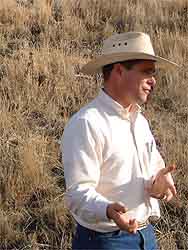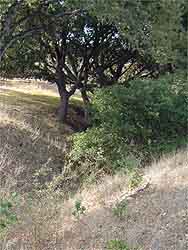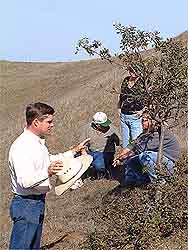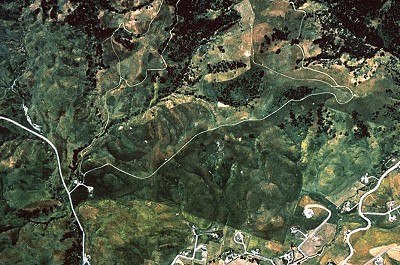by Peter Donovan
SAN JUAN BAUTISTA, CALIFORNIA -- Joe Morris had a conflict in his life. "I worked on ranches in Nevada, such as the Spanish Ranch. I couldn't square my love of land and horses and cowboying with building a just society."


He lived with Mexican workers, and went to Latin America as a volunteer with the Catholic Church. After two years, he went back to school for a master's degree in theology, spending his summers on the range in Nevada. The one part of his life wasn't square with the other.
One day, next to a book by James Baldwin in the library, Morris noticed Wendell Berry's Home Economics. "It just floored me. I couldn't believe what I was reading -- it was all about the connections between agriculture and social justice."
Soon after, he read one of Sam Bingham's pieces about Allan Savory's work. He went back to California and looked for people who were doing it. He read Holistic Resource Management. He returned to his family's ranch near San Juan Bautista, and began making some changes.
In 1993, because of an excess fuel load, burning was proposed as a management tool in nearby Hollister Hills State Vehicular Recreation Area. Residents of the adjacent Hidden Valley residential development were against burning, however. Some had noticed that since grazing had ceased in Hollister Hills, the wildflowers were in decline, along with an accumulation of thatch and other fuel. Joy Law, a local resident, got Joe together with David Amme, an ecologist working with the Hollister Hills state park.
Said Morris, "David Amme, who is passionate about native grasses, said 'rest is not working -- we've got a morgue out here.'" Morris, by providing fencing, water points, and a plan to regenerate biodiversity, particularly perennial grasses, was able to lease the grazing at a low rate. Most grazing leases, says Morris, are pegged to the cattle market. "Therefore, most lessors will do no management."
"Generally, people don't manage perennials well." In the 1800s, Richard Henry Dana wrote about sailing into San Francisco Bay in the summer, and "the hills were green."
With 27 paddocks, at Hollister Hills, fast moves, and at least 30-day recovery periods during the growing season, the perennials are coming back. Creeping wild rye, a perennial, is lining the gullies and slips. The park management is happy about the reduced risk of fire. "In five years, there has been a big change."
"People believe that nature is static, that it doesn't matter what you do." But Morris hopes to create a market for vegetation management. "There ought to be a reward out there for enhancing water catchments and biodiversity. Ranchers produce water. There should be no rent for people who are generating wealth with soil surface and vegetation management."
Morris has also seen changes under his management on the home place. The hills above the pond behind the house have changed from bare ground and filaree to more perennials, with lots more diversity and biomass. Now the pond's edges are lush and green, filled with frogs and salamanders. Oak regeneration, widely considered an intractable problem, is also happening. "Dormant-season grazing is usually hard on small oaks."
"On all of the places we manage, we see evidence of progress toward a more biologically diverse landscape."

What has he learned? "You've got to have a goal and a plan. You need to revisit it to make sure you're getting it done."
"Inevitably, you get a sense of calm once you get a plan and a vision."
"The economics of the commodity cattle business is no slam dunk. People who are in ranching are pretty good people, but most are not entrepreneurial. It's a fascinating and complicated business." Morris would like to direct market beef along a community-supported agriculture (CSA) model.
"There's a market. People want grass-fed beef that tastes great and is better for you. By requiring a federally inspected processing plant however, regulators and the big corporate interests have made direct marketing beef to your neighbor difficult or even illegal. This is an issue that the community interested in sustainable agriculture has to address."
"I've loved being a cowboy from the time I could walk. I have always been taught by my family, you ought to do something you love. Love is an enormously powerful economic principle that is largely ignored in the money economy. To me, sustainability means reconnecting communities of people to the produce of the farms and ranches. To do that, we need to decentralize the food system, and make direct connections between farmers and people, so people know how their food is produced. Then corporate farms that are largely faceless wouldn't have the edge over people with faces in the community."
"I enjoy what I'm doing most when I get out of the realm of being pressed for time -- such as working cattle on horseback with people who are good at it."

Related articles and links
Updated 5 December 2002